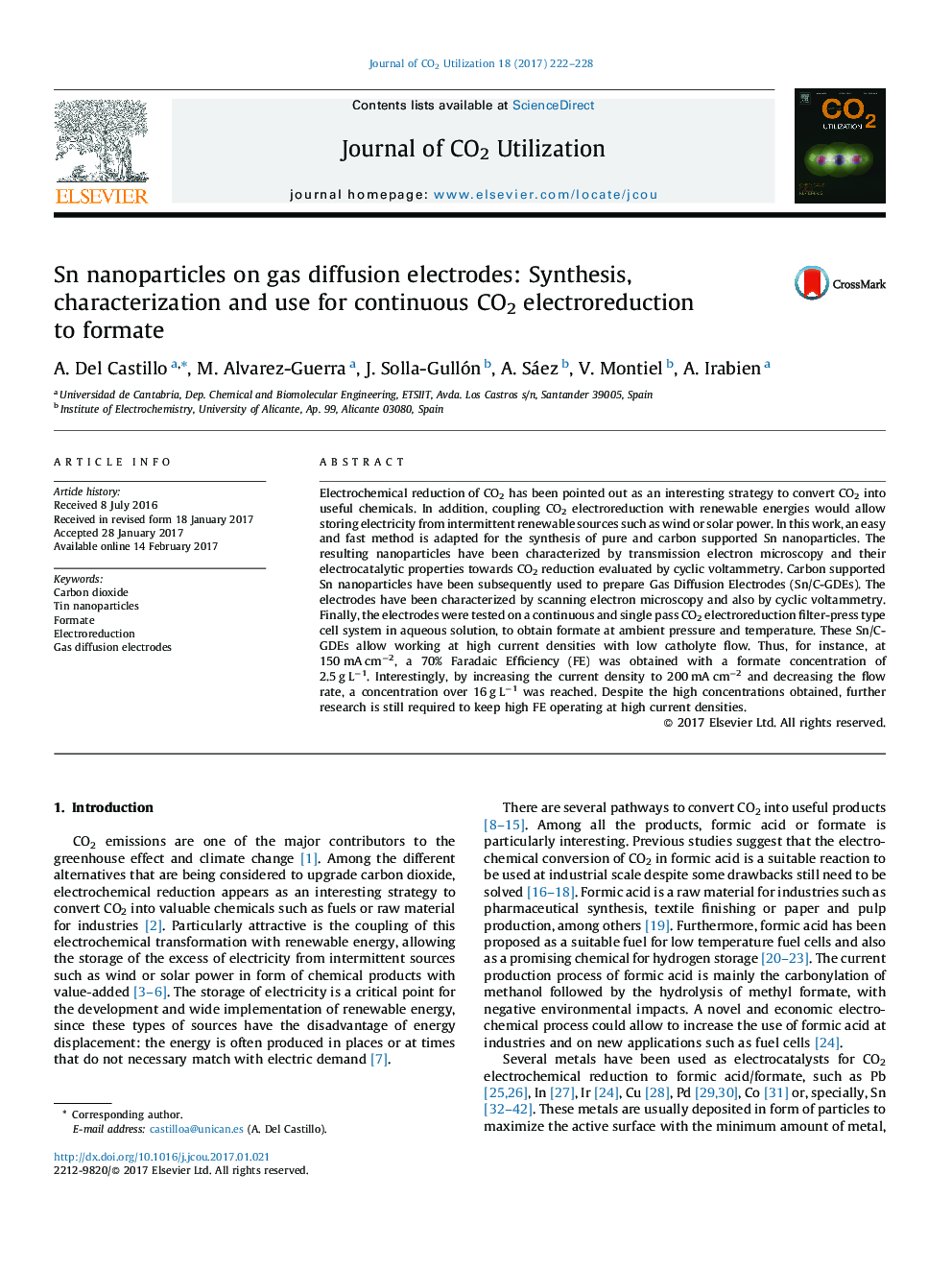| کد مقاله | کد نشریه | سال انتشار | مقاله انگلیسی | نسخه تمام متن |
|---|---|---|---|---|
| 6456223 | 1419844 | 2017 | 7 صفحه PDF | دانلود رایگان |

- Sn nanoparticles (10-15Â nm) were synthetized using an easy and fast method.
- Sn GDEs were prepared and characterized with the synthetized Sn nanoparticles.
- Electrodes were tested on continuous electrochemical cell for CO2 electroreduction.
- 2.5 g Lâ1 of formate was obtained with 70% Faradaic Efficiency at 150 mA cmâ2.
- Up to 16 g Lâ1 of formate has been obtained at the expense of lowering Faradaic Eff.
Electrochemical reduction of CO2 has been pointed out as an interesting strategy to convert CO2 into useful chemicals. In addition, coupling CO2 electroreduction with renewable energies would allow storing electricity from intermittent renewable sources such as wind or solar power. In this work, an easy and fast method is adapted for the synthesis of pure and carbon supported Sn nanoparticles. The resulting nanoparticles have been characterized by transmission electron microscopy and their electrocatalytic properties towards CO2 reduction evaluated by cyclic voltammetry. Carbon supported Sn nanoparticles have been subsequently used to prepare Gas Diffusion Electrodes (Sn/C-GDEs). The electrodes have been characterized by scanning electron microscopy and also by cyclic voltammetry. Finally, the electrodes were tested on a continuous and single pass CO2 electroreduction filter-press type cell system in aqueous solution, to obtain formate at ambient pressure and temperature. These Sn/C-GDEs allow working at high current densities with low catholyte flow. Thus, for instance, at 150 mA cmâ2, a 70% Faradaic Efficiency (FE) was obtained with a formate concentration of 2.5 g Lâ1. Interestingly, by increasing the current density to 200 mA cmâ2 and decreasing the flow rate, a concentration over 16 g Lâ1 was reached. Despite the high concentrations obtained, further research is still required to keep high FE operating at high current densities.
115
Journal: Journal of CO2 Utilization - Volume 18, March 2017, Pages 222-228